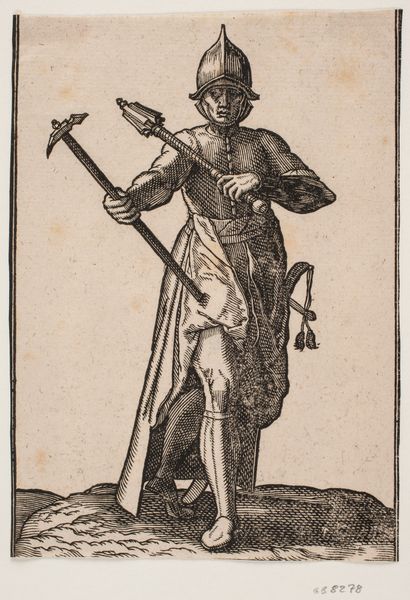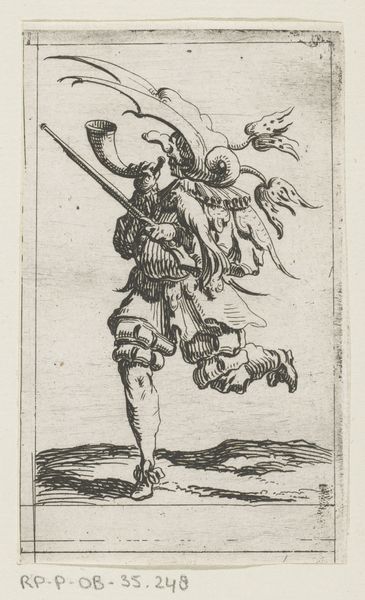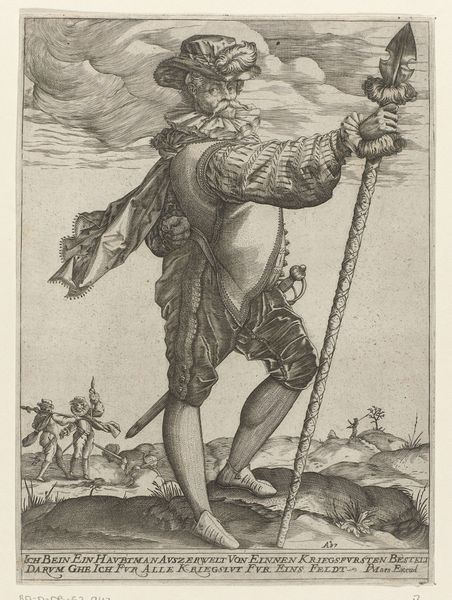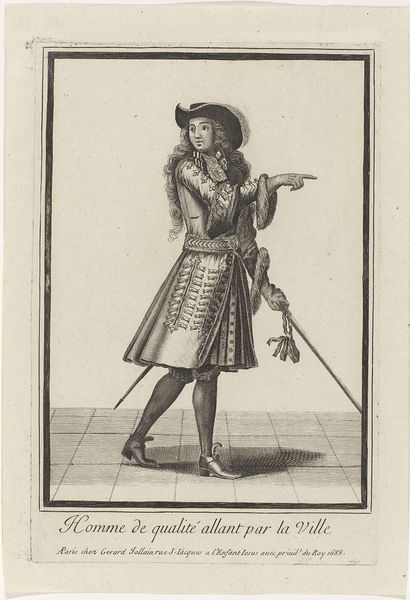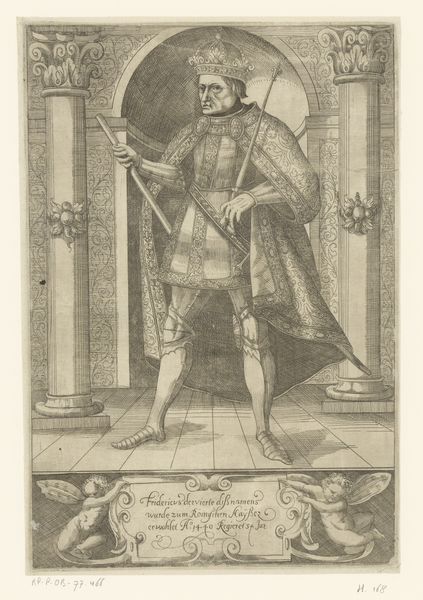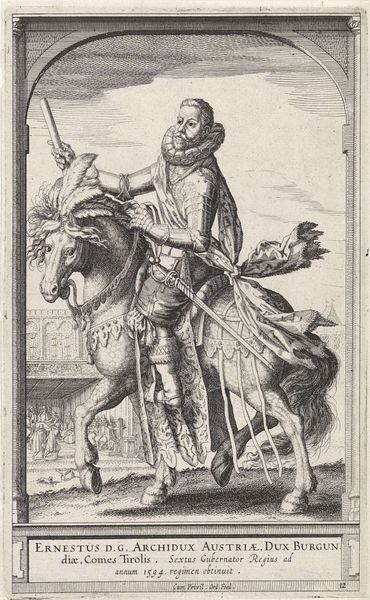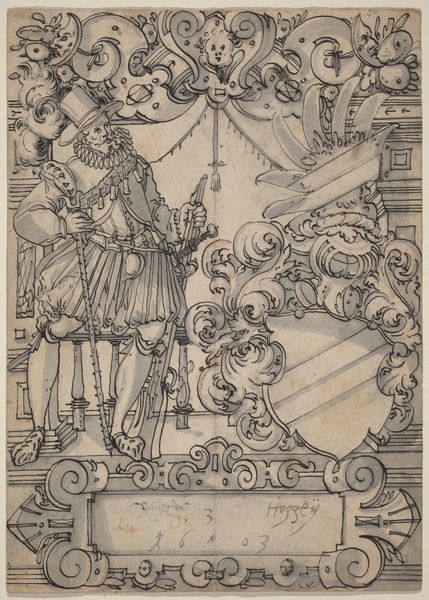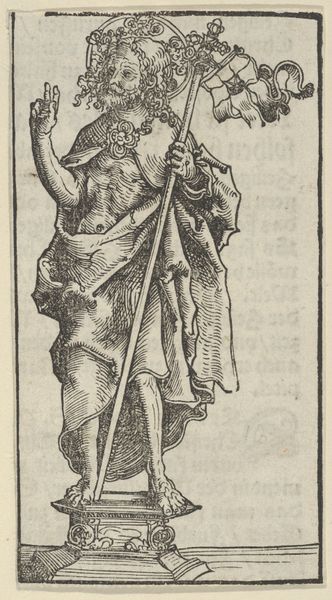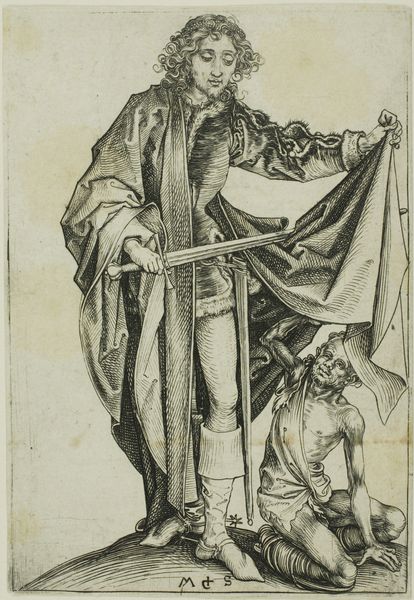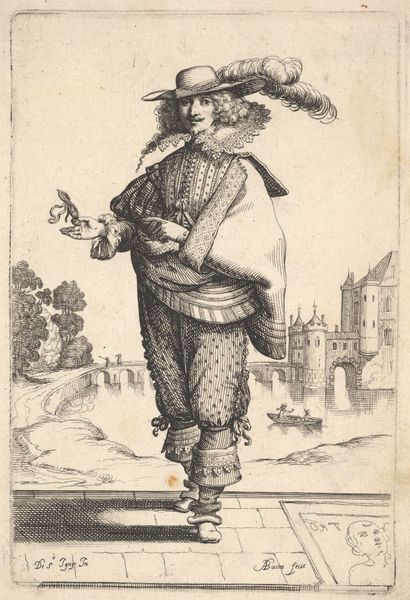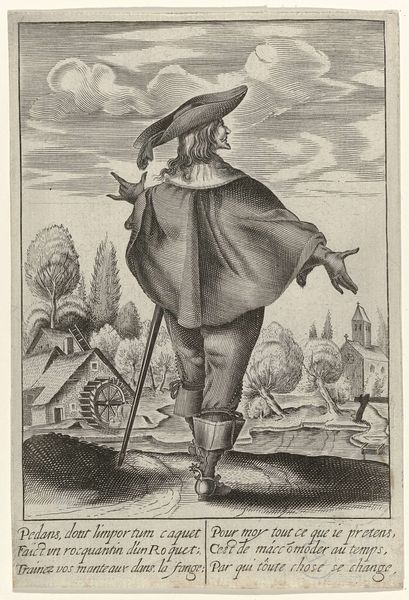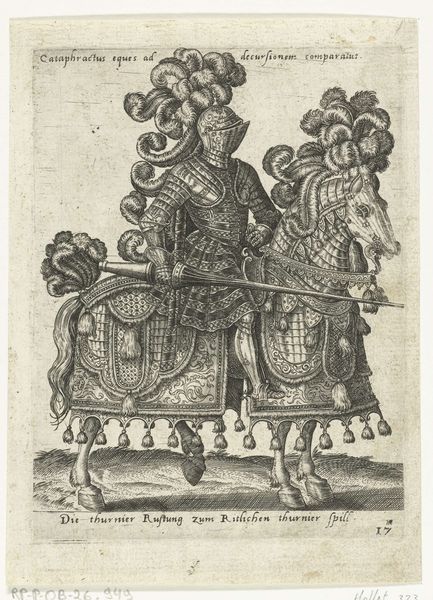
drawing, print, engraving
#
portrait
#
drawing
#
medieval
# print
#
figuration
#
engraving
Copyright: National Gallery of Art: CC0 1.0
Curator: Let's turn our attention to this intricate engraving, “Saint Quirinus of Neuss,” by Israhel van Meckenem. A compelling figuration executed in the print medium. What strikes you upon seeing it? Editor: The weight of it all. The saint is loaded down—with armour, flag, halberd, shield. Yet, the detail! Look how crisply those objects reflect light, creating the mood of pious seriousness appropriate for that time period. There’s something quite melancholy and solemn in his upward gaze. Curator: Indeed, Meckenem, active in the 15th century, was a master of engraving, and this work exemplifies the rise of printmaking as a means to disseminate religious imagery and assert socio-political presence. This image offered accessibility of the Saint to more than just those who could access it in books or religious sites. Editor: Notice the peculiar design of the shield and flag, though—they’re not mere decoration, but carry significant meaning. Consider the "flower" on the flag - clearly indicating nobility. These symbols connect Quirinus to narratives of courage, martyrdom, and even potentially miracle workings. We, too, are connected, centuries later, to the historical interpretations via the engraver's decisions. Curator: Absolutely. The symbols are key to understanding his importance, particularly in Neuss, where he was venerated as a protector of the city. The rendering is somewhat unusual for Saint representations which had previously focused primarily on the figure and story within paintings. Here, the individual armor and dress has weight because its production became more individualized during this time period, even mass produced by people like the artist. Editor: And those eyes cast upward, a subtle nod towards devotion. Note too the slight curl of his hair... not just design but, given his status as nobility in some accounts, indicators of beauty standards of the period and how such leaders were presented in society. How do you see this image affecting those in its socio-political sphere at the time of creation? Curator: As a popular, available art form, Meckenem's print offers the opportunity for broad distribution of images tied to authority, religion, or political leaders, allowing even a more diverse or geographically distant population a glimpse into this elite circle of society. This not only cemented status, but gave visibility and influence. Editor: Seeing all that he is carrying as objects connected to his cultural perception definitely helps cement my perspective about the symbolic representation from within the society in which it originated. Curator: Yes. Through careful observation, one might say we've given voice to this silent image, teasing out the fascinating interplay between image, artist, and society.
Comments
No comments
Be the first to comment and join the conversation on the ultimate creative platform.
